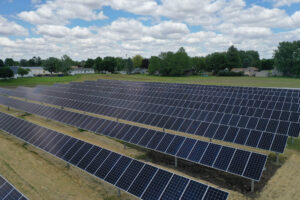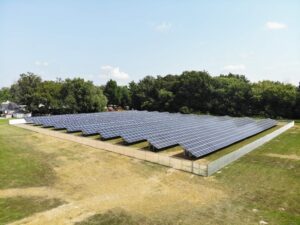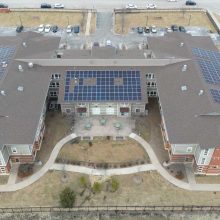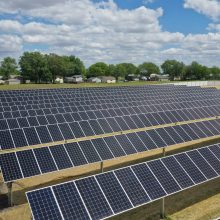ComEd Net Metering: An Overview
ComEd’s net metering program allows you to maximize the benefits of your solar PV system by giving you credit for the excess electricity you export to the grid. This credit helps offset your energy costs during times when your solar PV system isn’t generating enough electricity to meet your needs, such as at night or during cloudy days.
For most residential solar PV systems in Illinois, especially those connected to ComEd’s grid, at least 25-50% of the energy produced by the system is typically exported. This happens because solar production often exceeds household energy usage during peak sunlight hours, typically in the afternoon. Conversely, energy consumption often exceeds solar production at night, which is where net metering becomes crucial.
How ComEd Net Metering Works
Net metering is a straightforward concept: when your solar panels produce more energy than your home uses, the excess energy is sent to the grid. ComEd credits you for this excess, which you can use later to offset the cost of the energy you pull from the grid when your solar production is low. This mechanism is not only beneficial for daily usage but also for managing seasonal variations in solar energy production.
For example, from March to September, solar PV systems in Illinois often generate more electricity than a household uses. With net metering, you can carry over these excess credits from one month to the next, effectively using your summer surplus to cover your winter energy needs.
Understanding Your Common-Wealth Edison Bill with Net Metering
When you look at your ComEd bill, it’s important to remember that the kWh usage shown only reflects the electricity you pulled from the grid, not your total energy consumption. The energy your home uses directly from your solar PV system is not shown on the bill but is crucial in reducing your reliance on grid electricity.
The way net metering credits are applied to your bill depends on your pricing plan:
- Fixed-Rate Pricing (Rate BES):Here, net metering credits appear as a kWh credit, directly offsetting the number of kWh you consume from the grid. For instance, if your system exported 564 kWh to the grid but you consumed 2,156 kWh, your net usage would be 1,592 kWh. This could eliminate or significantly reduce the supply charges on your bill, depending on your accumulated credits.
- Hourly Pricing (Rate BESH):With this plan, net metering credits are applied as a monetary value instead of a kWh-based credit. Since electricity prices fluctuate hourly, the credit value for each kWh exported varies. These monetary credits can reduce not just the supply charges but also other portions of your bill, potentially resulting in a negative charge that can be rolled over to future months.
Changes to ComEd Net Metering in 2025
As we approach 2025, there’s a lot of confusion surrounding changes to ComEd’s net metering program, which is largely by design. Currently, all excess energy at the end of the month will count towards net metering credits.
The most significant change is the reduction in the credit valuefor excess energy that makes its way to the grid, a delivery credit will not be provided. Customers will still receive a supply charge credit on all excess energy sent to the grid. While this might seem like a considerable loss, it’s essential to understand that it’s only a portion of the energy credit you’re losing—specifically, the demand credit. Additionally starting June 1st, 2025, ComEd will apply a rate increase to the supply charge of electricity. Going solar now allows you a fair market value for your supply energy costs.
Maximizing Your Solar Investment Amid Changes
Many customers are concerned that net metering will disappear entirely, but this isn’t the case. The key change is a reduction in credit value, not an elimination. It’s crucial to communicate that solar is still a valuable investment, even with these adjustments.
Given that the average customer uses about half of the energy their system produces in real-time (i.e., as it’s generated), you can maximize your net metering benefits by adjusting your energy usage. Meet with an energy consultant to see if this could be applied to the way your home uses electricity.
Furthermore, although the demand credit is being reduced, ComEd is planning a rate increase to the supply charge in June 2025, which will increase the value of the credits you do receive. This means that while you may lose some credit on one side, you’ll gain it back on the other, especially if you manage your home’s energy usage effectively.
Why Now is the Time to Go Solar
If you’re considering going solar, now is the time to act. By installing a solar PV system before the 2025 changes take effect, you’ll lock in the current, more favorable net metering terms. Waiting could result in higher costs due to the reduced demand credit and the inevitable increase in supply charges. However, the 3rd rebate currently available ensures you achieve the same return on investment as those who went solar under previous terms. So there is an effective grace period even if we don’t make the cut-off.
Conclusion
The changes to ComEd’s net metering program might seem daunting, but with the right understanding and strategy, you can still make solar a financially smart choice. By adjusting your energy habits and acting before the rate changes, you can protect yourself from rising energy costs and ensure your solar investment continues to pay off in the long run.














